The collaboration gap that keeps marketing agencies from delivering faster, better results
Published on Oct 1, 2025
The collaboration gap that keeps marketing agencies from delivering faster, better results
Published on Oct 1, 2025
Collaboration is one of the biggest challenges facing marketing agencies today. The increasing number of projects, hybrid teams, and demanding clients makes day-to-day management more complex. If this complexity is not managed properly, it can quickly undermine the fluidity and efficiency of internal and client-facing work.
Moreover, invisible obstacles lie behind this reality: a lack of centralized information, siloed communication, and resistance to change. These obstacles are often rooted in deeply ingrained work habits that are no longer relevant.
How can you overcome these obstacles and unlock your agency's full collaborative potential? New approaches supported by innovative tools and methods based on visual collaboration may be the solution. How can you adapt these approaches to your context, and where should you start?
This guide provides advice and concrete examples to help your marketing agency regain agility, cohesion, and creativity.
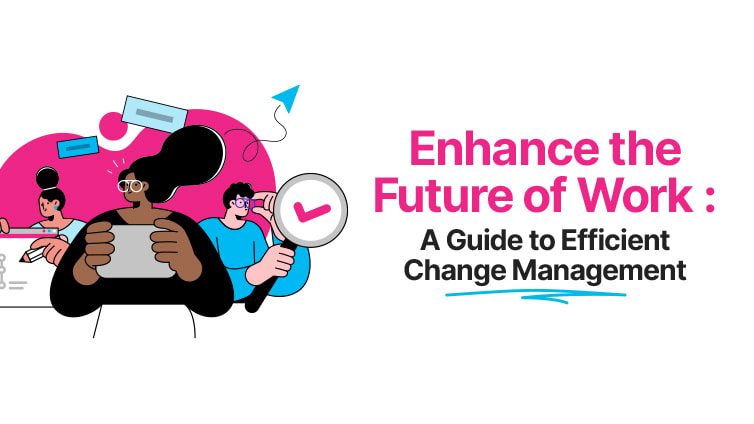
From analyzing needs to recognizing successes: with this guide, you can implement your change management strategy in 10 steps.

Did you know that 76% of business leaders work with an agency to manage their marketing, communications, or creative projects?
Year after year, the marketing agency market continues to grow. Why? Because, in an era where every dollar invested must prove its value, companies are turning to outsourcing to increase their agility and expertise while limiting risks.
However, behind this apparent dynamism lies a major challenge: collaboration. There are more projects, demanding clients, and increasingly dispersed teams. There is also a proliferation of tools. Aligning and maintaining fluid communication is becoming a real headache, both internally and with clients. Who hasn't wasted hours tracking down the right brief, waiting for feedback, or navigating endless back-and-forth exchanges?
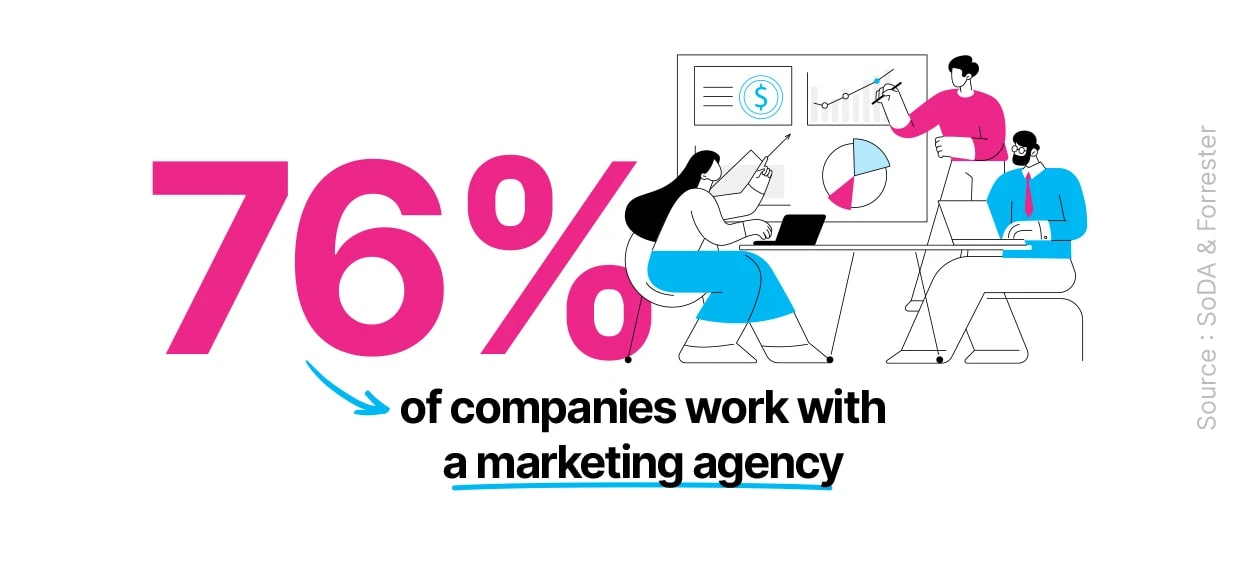

Despite the promise of technology to simplify teamwork, why does the collaborative gap continue to hinder agency performance? What invisible barriers stand in the way of your efficiency? More importantly, how can you transform these obstacles into a competitive advantage?
In this guide, discover how to identify the barriers to collaboration in your agency, implement the most effective solutions to bridge this gap, and finally regain smooth, efficient, and creative collaboration without compromising on quality.
Ready to revolutionize your practices?
The marketing agency market has never been so healthy. In 2024, its size in the US was estimated at $172.40 billion, with two types of agencies standing out:
However, whether they are generalist or specialized, all these marketing agencies face growing challenges related to their collaboration.
The rise of digital and new media has multiplied the points of contact between brands and their audiences, but also between agencies and their clients:
This observation reveals a paradox: the more tools and means of communication available, the more complex and time-consuming collaboration becomes. Each tool meets a specific need, but the lack of centralization can quickly lead to duplication, wasted time, and scattered information.
Customers also expect agencies to deliver faster, with higher quality deliverables, while being able to accurately measure their return on investment (which is also required internally).
At the same time, they want to benefit from detailed reporting, personalized content, and constant monitoring of new trends. These increasing demands put pressure on agencies, which must constantly innovate to remain competitive.
The growth of remote work, international projects, and the gig economy (the integration of freelancers and external partners) accentuates the need for hybrid collaboration, as teams are often spread across multiple time zones.
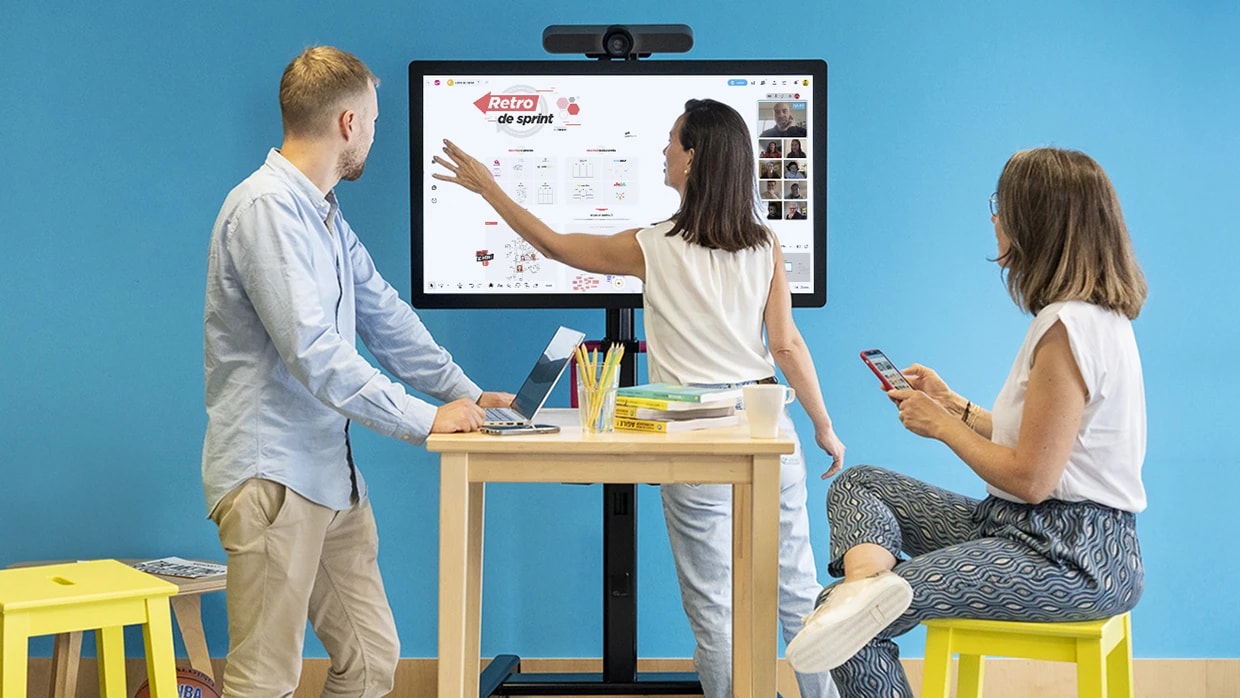

Nowadays, it is common for marketing agencies to have some team members on site and others connected remotely, whether they are employees, partners, or clients.
While this flexibility promotes diversity of ideas, it can also complexify communication, alignment, and collective engagement on a daily basis.
Admittedly, the structural challenges of the marketing agency sector explain much of the complexity of collaboration within it, but this is only one aspect of the problem.
As agencies transition to hybrid models and take on increasingly complex projects, certain work practices are reaching their limits. Added to this is a lack of structure and accountability, which directly impacts team efficiency, engagement, and satisfaction.
As needs become more numerous and varied, it is only natural for agencies to adopt new digital tools. However, without consistent integration of all these tools, sharing information in the workspace can quickly become difficult, if not impossible to manage. Here are a few examples:
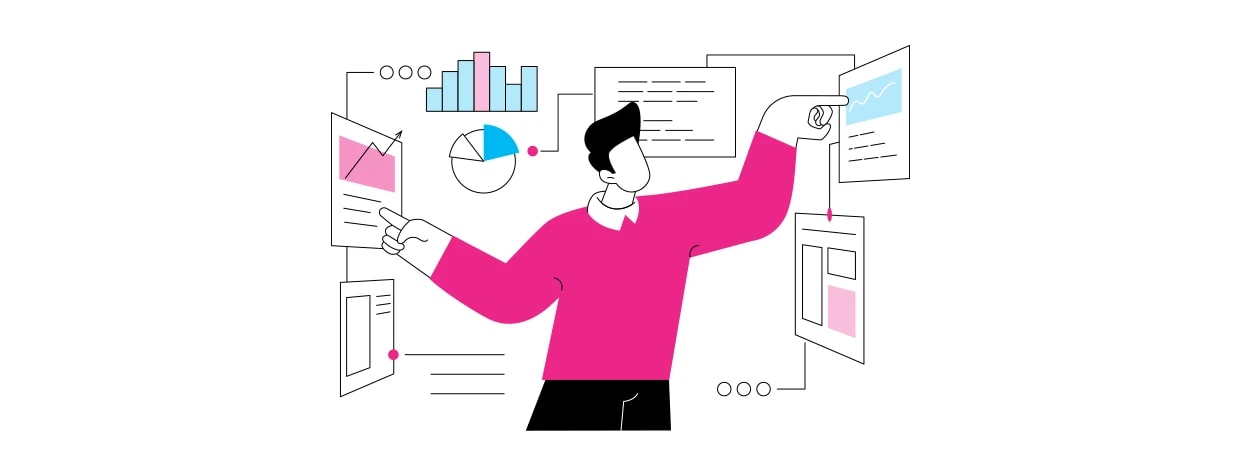

Without a centralized workspace, teams spend a considerable amount of time juggling between different tools to find the right information or the latest version of a document.
At best, this slows down projects and causes frustration. At worst, it leads to oversights, errors, or critical delays that can damage customer relationships and the agency's reputation.
Clarity of roles is essential to collective performance, especially in marketing agencies where the same people often manage several projects at the same time, and where the slightest ambiguity can have a negative impact.
However, it is not uncommon for the distribution of tasks to remain unclear, which hinders collaboration and increases dysfunction.
Again, a few examples here:
Conversely, when everyone knows exactly their role and responsibilities, the team gains in agility, responsiveness, and quality of service.
In addition to tools and the definition of each person's role, it is often work habits that no longer make sense in a changing context that create siloed collaboration within an agency.
These communication silos also form spontaneously:
This fragmentation of interactions slows down decision-making, increases misunderstandings, and can lead to frustration.
Conversely, fostering a culture of cross-functional collaboration, where information flows freely and everyone can express themselves without constraints, is essential to overcoming these silos and strengthening collective efficiency.
Ultimately, any transformation initiative involving tools, processes, or practices is accompanied by a degree of resistance to change within organizations, and marketing agencies are no exception.
Changing ingrained habits takes time and effort, and can cause anxiety: fear of losing one's bearings, fear of not mastering new tools, feeling overwhelmed, etc.
Sometimes, it is the agency culture itself that slows down the adoption of change, due to a lack of support or communication about the expected benefits.
To overcome this resistance, it is essential to involve everyone in the discussion, to value initiatives, and to establish a culture focused on experimentation and continuous improvement.
Fortunately, today you can overcome these obstacles and pave the way for a new form of collaboration. By focusing on visual collaboration and thoughtful use of collaborative tools, marketing agencies can truly transform their practices and regain agility, fluidity, and creativity.
The fastest and most effective way to achieve this is to implement an all-in-one collaborative platform. Through these 5 practical tips, discover how this type of tool can help you optimize the organization of your agency's work.
Let's start with a reminder: visual collaboration is based on practices that make information and exchanges accessible to everyone in real time, using graphic and interactive media.
In a marketing agency, this approach allows you to centralize exchanges and deliverables, while offering each stakeholder, client, or internal team a clear and comprehensive view of project progress.
Let's take the example of a visual whiteboard (such as a Klaxoon Board) dedicated to collaboration with a client:
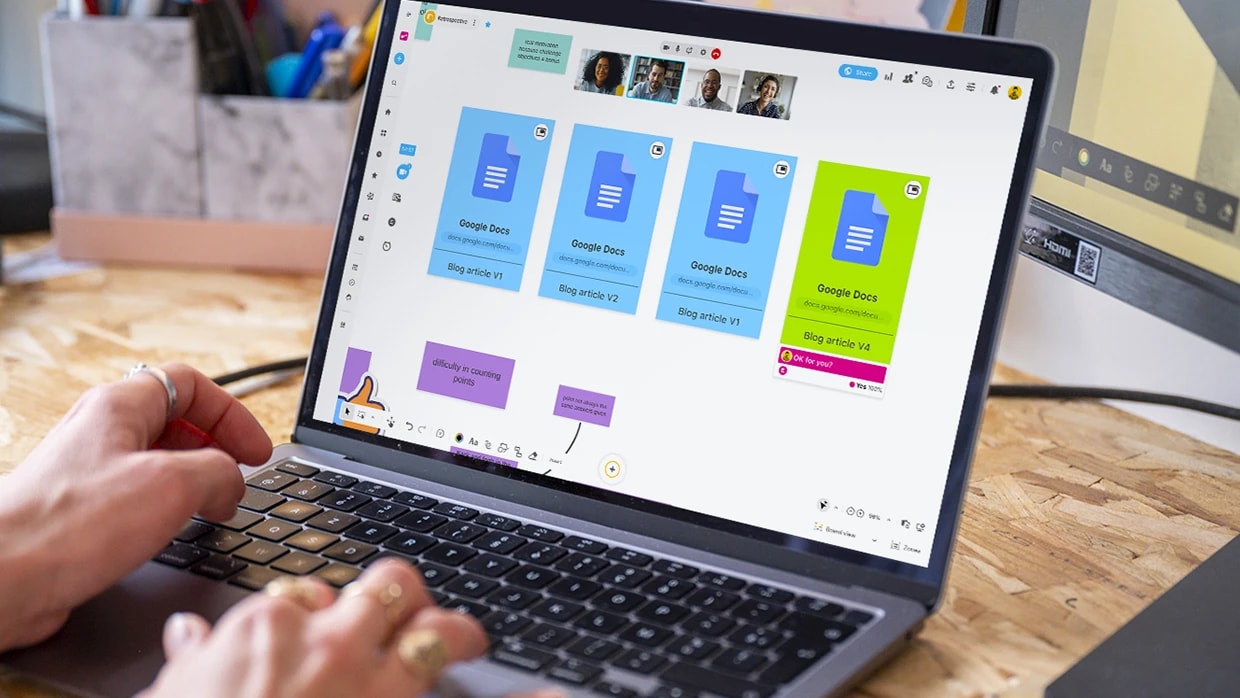

For example, you can use a whiteboard to share different versions of your deliverables one after the other and use color coding to indicate which version is the most up-to-date.
According to a Marketing Charts report from 2024, 66% of marketing agencies consider managing a growing number of tools and channels to be a real obstacle to smooth communication. Meanwhile, 78% of them believe that having the right tools in place is essential for working efficiently.
To simplify and streamline your workflows, vary the formats of your interactions with visual activities such as quizzes, polls, and feedback collection tools—all without leaving your centralized visual workspace!
For example, in your project Board, you can also share a quick survey with project stakeholders to gather their first impressions and help you steer the project in the right direction. This all-in-one approach allows you to:
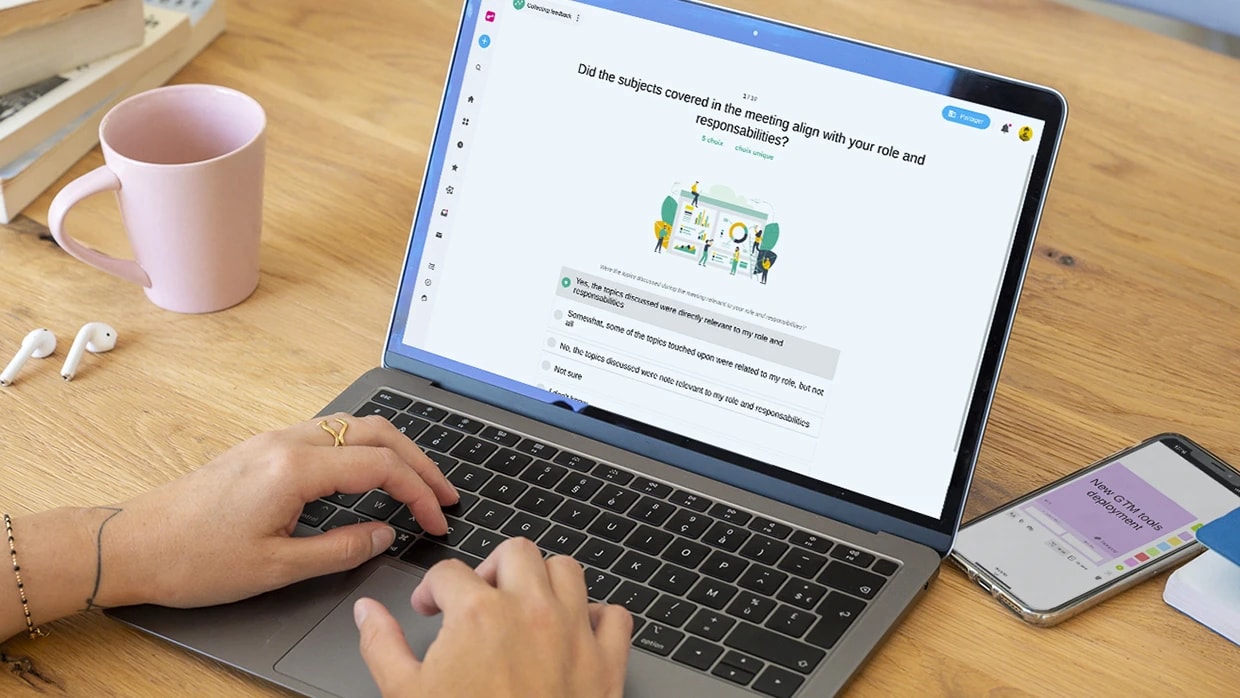

With Klaxoon, you can create dynamic, visual Surveys with a variety of question types, such as multiple choice and open-ended questions.
Time-to-market pressure in agencies leaves less and less room for customer engagement at the project co-creation stage.
In this context, ready-to-use workshop or brainstorming methods can be extremely useful in boosting your efficiency and easily establishing a common language with your customers, even when they are unfamiliar with how you usually work.
For example, with Klaxoon, you have access to a library of structured activity templates for organizing ideation workshops, facilitating follow-up meetings, and prioritizing actions with your team or clients.
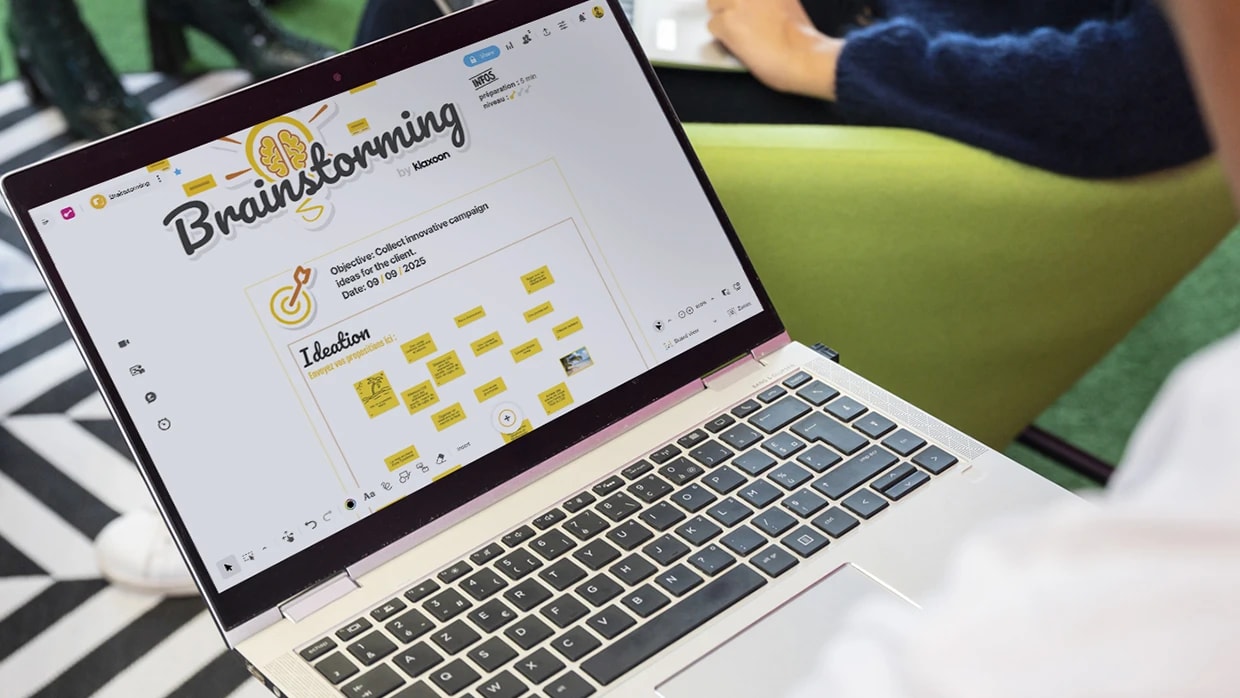

This Board template is designed for effective brainstorming sessions. All you have to do is add your ideas to the provided spaces!
Artificial intelligence is now a real performance lever for organizations, and marketing agencies must also use it to stand out.
Some all-in-one platforms, including Klaxoon, already integrate AI features directly into their whiteboards, allowing you to:
As a result, you will spend less time organizing information manually, facilitate your international work, and reassure your clients by showing them a quick and concrete transition from idea to action.
To maximize both your co-creation and execution efficiency, the combination of Klaxoon and Wrike is the most powerful and comprehensive solution to support your agency's transformation.
Wrike is a work management platform that integrates seamlessly with Klaxoon, giving you a single, continuous workspace from ideation to operational management. Specifically, you can:
For marketing agencies, transforming collaborative practices is now a necessity for maximizing efficiency and performance, both internally and with clients.
This evolution requires centralizing exchanges, streamlining workflows, and combining creativity with operational execution. With these levers, you can pave the way for simpler, more transparent, and more productive collaboration.
Solutions such as Klaxoon and Wrike make this transformation accessible: they allow you to unleash the full potential of your teams and offer your clients a truly differentiated experience.
What if improving the quality of your collaboration became your agency's greatest competitive advantage?
Unlock your teamwork potential
For free, make your first steps to top-tier work efficiency with the Klaxoon Visual Platform.